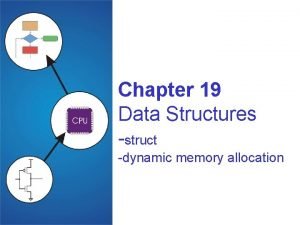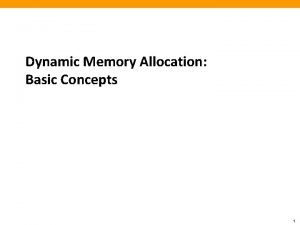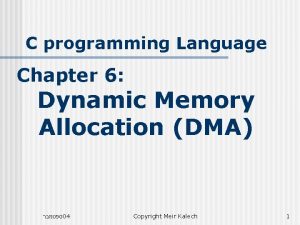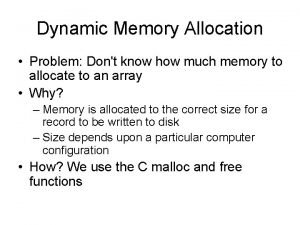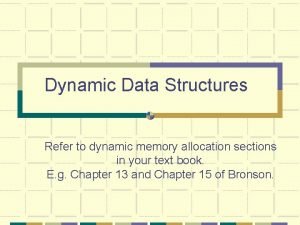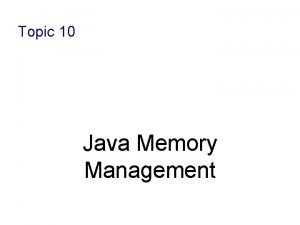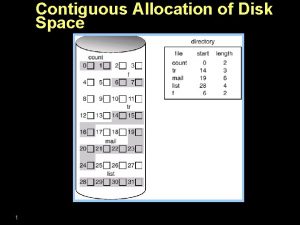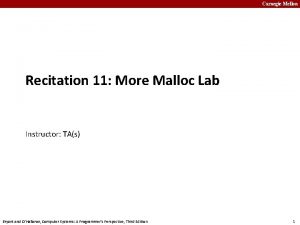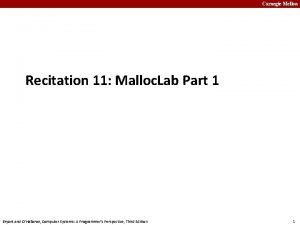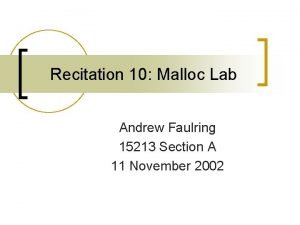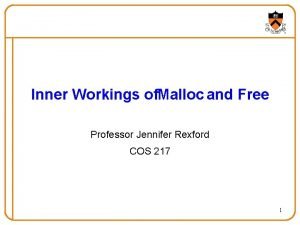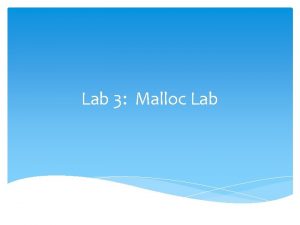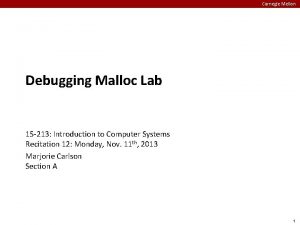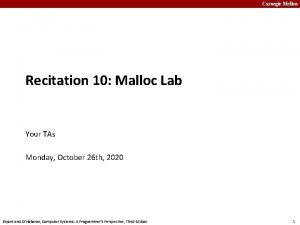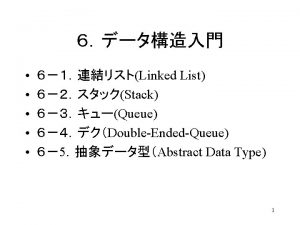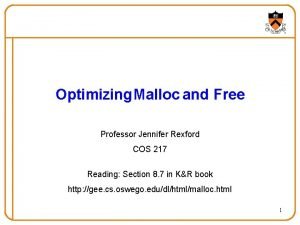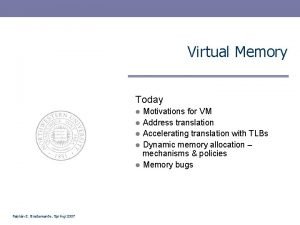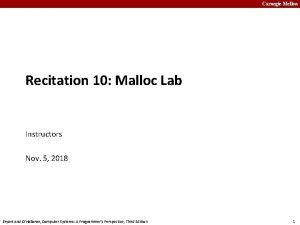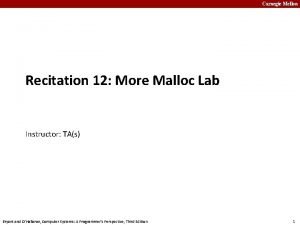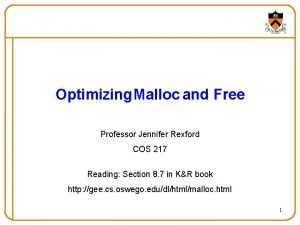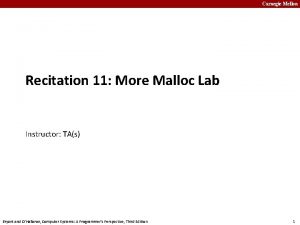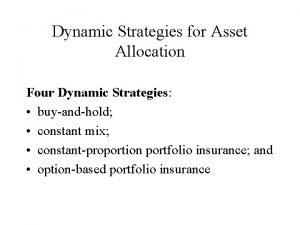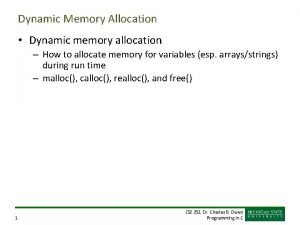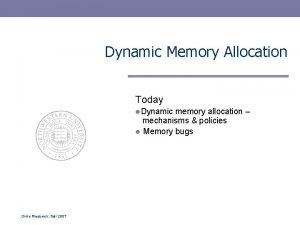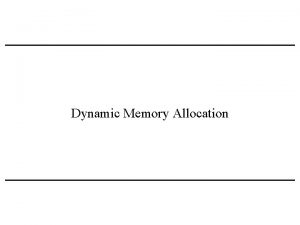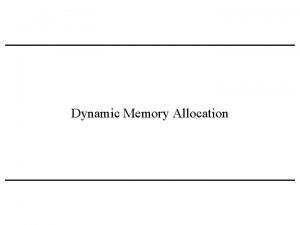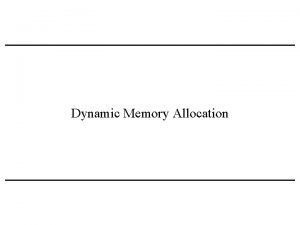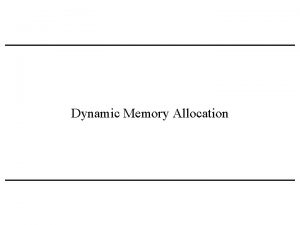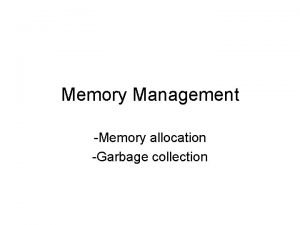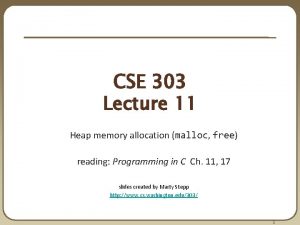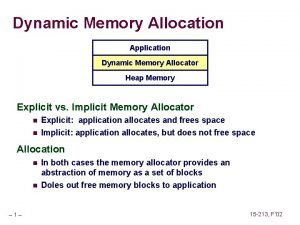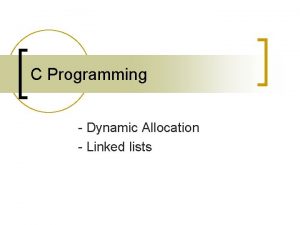Dynamic Memory Allocation Scope Dynamic memory Allocation Malloc








































- Slides: 40

Dynamic Memory Allocation ● Scope ● Dynamic memory Allocation ● Malloc ● Calloc ● Realloc ● Alternative to Dynamic Memory Md. Jakaria Lecturer Dept. of CSE, MIST

Scope of a Variable Three places

Scope of a Variable Scope of n and m

Scope of a Variable Scope of g

Lifetime of a local variable Local variables are destroyed when they go out-of-scope

Reference to Local Pointer referring to expired local variable

Reference to Local Pointer referring to expired local variable

Reference to Local Pointer referring to expired local variable (Dangling Pointer)

Reference to Local Pointer referring to expired local variable (Dangling Pointer)

Dynamic Memory Allocation The concept Out-of-Scope

Dynamic Memory Allocation The concept Out-of-Scope

Dynamic Memory Allocation The concept Out-of-Scope

Dynamic Memory Allocation The concept Out-of-Scope

Dynamic Memory Allocation The concept Out-of-Scope

Dynamic Memory Allocation The concept Out-of-Scope

Dynamic Memory Allocation The concept Out-of-Scope

The malloc function void * malloc (size_t size); Memory required in byte e. g. sizeof (int) Returns pointer to the beginning of the block According to the 1999 ISO C standard (C 99), size_t is an unsigned integer type of at least 16 bit. This type is used to represent the size of an object. • https: //en. wikipedia. org/wiki/C_data_types#stddef. h • https: //stackoverflow. com/questions/2550774/what-is-size-t-in-c

The malloc function

Usage of malloc function • Dynamic allocation of • Array • Struct • Factory Methods

Destruction of Dynamic Memory When is it destroyed? Out-of-Scope Not destroyed automatically (Memory leak)

The free function When the outside (dynamic) memory is no longer needed void free(void *ptr)

The free function When the outside (dynamic) memory is no longer needed void free(void *ptr) free( )

The calloc function Same as malloc void *calloc(size_t nitems, size_t size) How many items? Size of each item The following two lines produces similar allocation

The calloc function void *calloc(size_t nitems, size_t size) • Initializes every bit to zero • Slower than malloc

The realloc function For resizing existing dynamic memory void *realloc(void *ptr, size_t size) Existing pointer New size Either memory is extended, Or Previous items are copied to new larger location

The realloc function void *realloc(void *ptr, size_t size) Existing pointer New size

The realloc function void *realloc(void *ptr, size_t size) Existing pointer New size

The realloc function void *realloc(void *ptr, size_t size) Existing pointer New size

The realloc function void *realloc(void *ptr, size_t size) Existing pointer New size

The realloc function void *realloc(void *ptr, size_t size) Existing pointer New size

Alternative to Dynamic memory - Global variables (Scope is increased) - Static variables (Life-time is increased)

Global Variable Initialization Automatically initialized

Global Variable Initialization Automatically initialized Credit: https: //www. tutorialspoint. com/cplus/cpp_variable_scope. htm

Variable Shadowing In case of same name, local variable takes preference

The static Keyword Prevents local variable from being destroyed until the program terminates

The static Keyword Prevents local variable from being destroyed until the program terminates

Memory Layout of a C Program https: //www. hackerearth. com/practice/notes/memory-layout-of-c-program/

Task 1 Create a resizable array of integers with the following options 1. Add a new number to the array 2. Display all numbers in the array 3. Delete an existing integer (by index) The storage should be flexible so that no memory is wasted.

Task 2 Design a record book that will hold the name, id and total marks of a student. The following options should be available. 1. Add a new record 2. Display all records 3. Edit an existing record 4. Delete an existing record 5. Search for a record by name or id The storage should be flexible so that no memory is wasted.

Task 3 Integrate Persistent storage (File) in Task 2, i. e. all the contents of the array should be written to file at the end of the program, and it should load all the contents from the file at the beginning of the program.
 Disadvantages of dynamic array
Disadvantages of dynamic array Dynamic memory allocation in data structure
Dynamic memory allocation in data structure What is dynamic memory allocation
What is dynamic memory allocation Tcmalloc
Tcmalloc Dma dynamic memory allocation
Dma dynamic memory allocation Example of dynamic memory allocation
Example of dynamic memory allocation Example of dynamic memory allocation
Example of dynamic memory allocation Alokasi memori dinamis c++
Alokasi memori dinamis c++ Explicit memory allocation
Explicit memory allocation Dynamic data structure
Dynamic data structure Memory allocation in java
Memory allocation in java Linked allocation
Linked allocation Io2br3
Io2br3 Product scope vs project scope
Product scope vs project scope Malloc format
Malloc format Malloclab
Malloclab Malloc lab 100/100
Malloc lab 100/100 Cmu malloc lab
Cmu malloc lab Cmu 15213
Cmu 15213 What is malloc and calloc in c
What is malloc and calloc in c Pictures
Pictures C linked list malloc
C linked list malloc Malloc lab
Malloc lab Malloc lab
Malloc lab Malloc lab walkthrough
Malloc lab walkthrough Malloc lab
Malloc lab C include malloc
C include malloc Malloc sizeof
Malloc sizeof Malloc
Malloc K&r malloc
K&r malloc Malloc
Malloc Malloc lab checkpoint
Malloc lab checkpoint Cmu malloc lab
Cmu malloc lab K&r malloc
K&r malloc Malloc lab cmu
Malloc lab cmu Buffer overflow mitigation
Buffer overflow mitigation Malloc chunk
Malloc chunk Bandwidth ancoats
Bandwidth ancoats Polymorphism dynamic allocation
Polymorphism dynamic allocation Assumptions for dynamic channel allocation
Assumptions for dynamic channel allocation Dynamic strategies for asset allocation
Dynamic strategies for asset allocation

